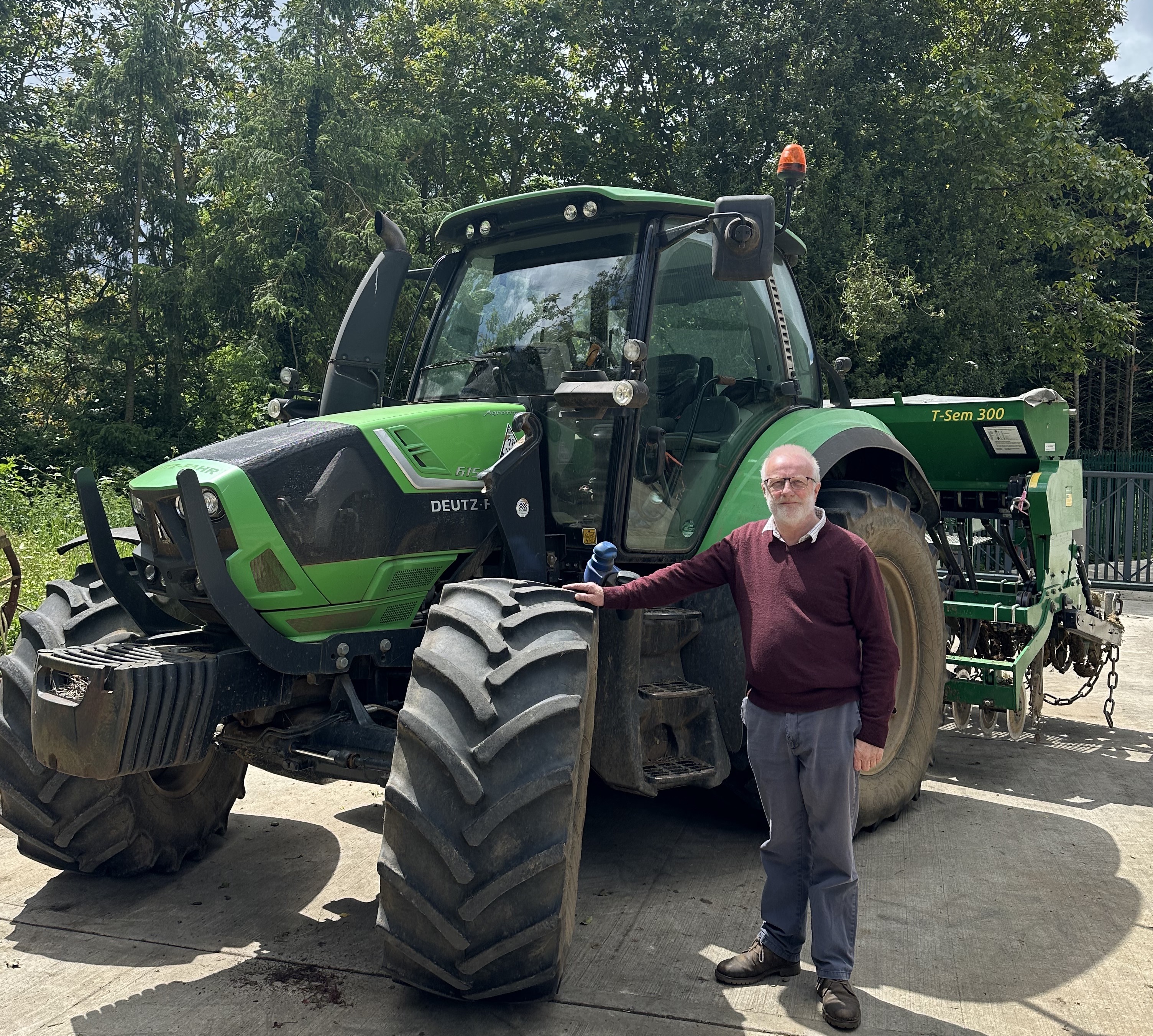

Farm Type: Traditional Mixed
Location: Northamptonshire
Size: 500 acres
Soiil Type: Ironstone to medium clay loam
Mizes Used: Herbal leys
Mark Spendlove grows herbal leys to produce good quality grazing and silage and to reduce overheads. His farm is ‘traditional mixed. We grow grain, graze sheep and keep a suckler herd of 100 cows, crossed with Hereford bulls, to produce supermarket spec cattle. ‘I say to folks, we’re newcomers, we’ve only been up here 75 years,’ quips Mark. We are both farmers and custodians of the land.’
Mark explains the drivers for herbal leys.
‘We’re in a very dry area, we have to manage with just eighteen inches of rainfall per year. Traditionally, we were growing ryegrass mixtures with clover. The old adage says that 50% of your grass will have grown by the end of May and that’s when the clover gets up and gets away. But with the lack of rain, and ryegrasses being shallow rooted, the ley tailed off after the first cut. Then complex herbal leys became available and we haven’t turned back.’
‘Originally the herbal leys included a proportion of ryegrass along with a range of other species, but as we have fine tuned the mixes we have reduced the ryegrass and opted for Timothy, cocksfoot and festuloliums which are deeper rooting for reaching moisture. The clovers are providing the protein and the chicory is very deep rooting for making drainage channels, along with plenty of earth worm activity. In the dry season, the leys are still green. Everything does a job.’
Mark has seen their need for nitrogen fertiliser drop off massively. ‘The leys are fixing their own nitrogen, and the residue that’s left over helps to grow the next cash crop. So there’s a double win. The other benefit is keeping the feed lorries away because we’re now producing 95% of our feed. The leys are brilliant for fattening lambs. My son in-law and daughter are selling finished lambs, 50kg plus, with absolutely no purchased feed; it’s purely this aftermath grazing.
‘The seed isn’t cheap compared to ryegrass based mixes, but you’re saving on nitrogen, and thanks to new SFI schemes in England we’re now being paid to grow these mixes which is yet another bonus. Though farmers absolutely need the subsidies, the leys would stand up on their own. We’re producing food, looking after wildlife, looking after the soil, and we’re paid to do it. What’s not to like?’
Mark prefers to establish the leys in spring.‘We’ve tried autumn but clovers can be slow and less reliable if we do not have an open autumn. When it comes to machinery for establishment, Mark keeps things simple.
‘A reliable establishment is key, we have a very simple tine drill with leading discs. We either use it for direct drilling when the conditions are right or as a seed broadcaster when we’ve had to make a seed bed. We basically just dribble it on the surface and the chains on the back work it into the ground. It’s essential to roll it, probably twice.
‘For cutting duties we operate a mower that has a rubber roller conditioner on the back which crimps the stem to let the moisture out. We don’t use a tedder to move the crop because the machine will knock it about too much; you’ll get leaf shatter and lose the protein. We pick the grass up with a self-loading forage wagon. The silage is destined for the pit and the speed at which we can clamp is what governs the speed of the operation. We use an additive to help with stability and improve fermentation because the silage can be sappy and higher in moisture than grass only mixtures.
Mark typically leaves leys in the ground for four years. In terms of management he advises ‘Give the ley a chance and be patient. Don’t leave cattle on for a prolonged period and certainly not in wet weather. You’ll be able to fatten lambs on it. There is talk about the clovers affecting the oestrogen cycling of ewes, so just be a little wary of that. Production in year one can take a while, especially from a spring sowing, you could top it to help tiller it out. Then next year you’ll comfortably get three mowings of silage off of it.’
Mark uses Cotswold Seeds ‘because they have been specialising in complex mixes for 50 years. I just ring up Sam and leave it to him to pick the varieties of grass, legumes and herbs that are going to suit our land. He knows us and the farm. I can’t fault them.’
Date Posted: 11th August 2025




